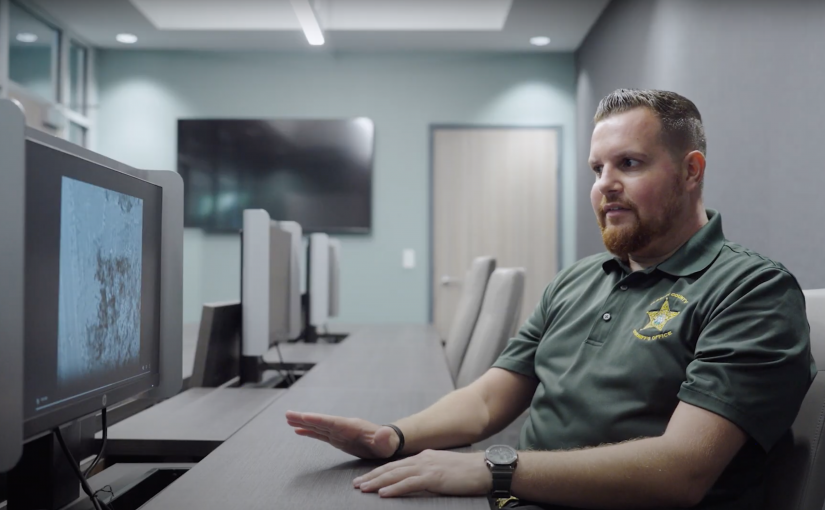The Flagler County Sheriff’s Office (FCSO) in Florida has taken a groundbreaking approach to public safety by incorporating drone technology to enhance both officer and community safety. FCSO’s program uses drones to minimize risks, improve response times, and de-escalate potentially dangerous situations, illustrating how drones are reshaping modern policing .
A New Era in Public Safety
Historically, police agencies relied on helicopters for aerial surveillance. While effective, helicopters pose logistical challenges—they are expensive to operate, require significant coordination, and cannot always be deployed swiftly. Recognizing these limitations, FCSO turned to drone technology as a more efficient, cost-effective solution. Drones provide real-time aerial views, offering officers immediate situational awareness without the delay of waiting for a helicopter to arrive from a neighboring county.
FCSO Commander Jonathan Dopp explains:
If we needed a helicopter, we’d often face a 20-minute delay. Drones, on the other hand, can be deployed instantly, giving us a crucial advantage in critical situations.
Strategic Advantages of Drones in Policing
Drones bring several tactical advantages to policing:
-
- Enhanced operational efficiency: Drones offer rapid deployment, flexibility, and lower costs compared to helicopters.
- Discreet surveillance: Drones allow officers to monitor suspects from a distance without revealing their presence.
- Reduced need for direct confrontations: By gaining a better understanding of the scene, officers can make informed decisions before engaging with suspects.
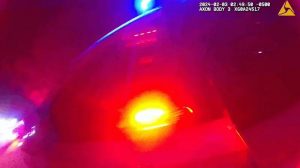 The ability to deploy drones swiftly allows FCSO to gather real-time intelligence that improves decision-making during emergencies. This capability has significantly reduced response times and improved outcomes in critical situations.
The ability to deploy drones swiftly allows FCSO to gather real-time intelligence that improves decision-making during emergencies. This capability has significantly reduced response times and improved outcomes in critical situations.
“What used to take an hour can now be completed in just minutes,” says Commander Dopp.
Drone as First Responder: A Game-Changing Deployment Strategy
FCSO’s primary drone deployment strategy follows a patrol-led model, where officers in the field deploy drones to provide aerial overwatch. This capability offers immense value in various scenarios:
-
- Perimeter setting and scene management: Drones provide a comprehensive view of the scene, allowing officers to establish safe perimeters and clear crash or crime scenes efficiently. This is particularly crucial in hazardous environments such as highways.
- Proactive overwatch: Drones act as the first eyes on the scene, enabling officers to assess potential risks before approaching suspects or volatile situations. This proactive approach reduces confrontations and improves overall safety for both officers and the community.
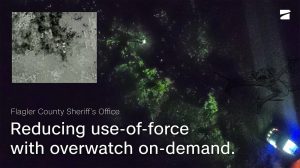
FCSO Sergeant Jorge Fuentes underscores the importance of drones in managing suspect unpredictability: “Deploying the drone allowed us to safeguard everyone involved, enhancing our situational awareness.”
Advanced Drone Technology
FCSO primarily utilizes Skydio drones, known for their advanced autonomy and obstacle avoidance capabilities. These features are critical for navigating complex environments, such as densely wooded areas or urban settings, without risking crashes.
Additionally, Skydio drones are equipped with the following features:
-
- Thermal imaging: This enables the drones to conduct night operations and locate suspects or missing persons based on their heat signatures.
- Real-time data sharing: Drones stream live video to command centers, providing crucial information to officers on the ground and other stakeholders.
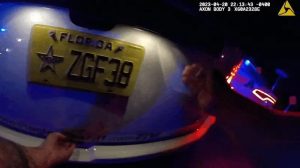 “Visibility was limited, but the drone became our eyes in the field, allowing us to locate the suspect quickly,” Commander Dopp adds, emphasizing the vital role drones play during nighttime or low-visibility operations.
“Visibility was limited, but the drone became our eyes in the field, allowing us to locate the suspect quickly,” Commander Dopp adds, emphasizing the vital role drones play during nighttime or low-visibility operations.
Case Studies: Demonstrating Drone Value
Nighttime Construction Site Incident
 In one case, FCSO deployed drones to respond to a construction site theft. Drones provided both surveillance and thermal imaging, allowing officers to apprehend the suspects without engaging directly. The live drone feed helped guide officers to the suspects’ exact location, ensuring a successful and safe arrest.
In one case, FCSO deployed drones to respond to a construction site theft. Drones provided both surveillance and thermal imaging, allowing officers to apprehend the suspects without engaging directly. The live drone feed helped guide officers to the suspects’ exact location, ensuring a successful and safe arrest.
“Without drones, a helicopter might have been required, adding unnecessary cost and complexity to the operation,” says Commander Dopp.
Rescue of a Distressed Individual
Drones were also instrumental in locating a child lost in a park after dark. The aerial perspective provided by the drone allowed officers to locate the child much faster than traditional search methods.
Community Engagement and Transparency
A critical component of FCSO’s drone program is fostering community trust through transparency. The sheriff’s office actively engages with the public to educate them on the responsible use of drones. This open dialogue ensures that the community understands how drones enhance safety while protecting civil liberties.
Ethical Considerations and Regulatory Compliance
FCSO adheres to strict guidelines regarding the ethical use of drones. Privacy concerns are addressed through well-defined policies, ensuring that drones are only deployed when absolutely necessary to enhance public safety. The sheriff’s office also complies with all relevant FAA regulations, maintaining full transparency with federal authorities to avoid potential legal issues.
Future Goals and Expansion
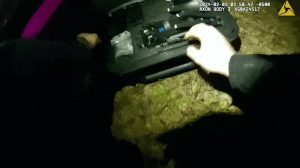 Looking ahead, FCSO aims to expand its drone program by integrating more advanced technologies such as LTE connectivity and autonomous response systems. These innovations will allow drones to respond automatically to 911 calls, further enhancing their ability to protect both officers and the community.
Looking ahead, FCSO aims to expand its drone program by integrating more advanced technologies such as LTE connectivity and autonomous response systems. These innovations will allow drones to respond automatically to 911 calls, further enhancing their ability to protect both officers and the community.
“Drones have become a force multiplier for our department, allowing us to respond more effectively while reducing risk,” explains Commander Dopp.
Leading the Future of Public Safety
The success of FCSO’s drone program demonstrates the significant potential of drone technology in modern policing. As more agencies recognize the value of drones, programs like FCSO’s will become models for police organizations around the globe. Skydio’s technology, coupled with FCSO’s commitment to safety and transparency, ensures that drones will continue to play a pivotal role in protecting communities while building public trust.
The future of policing is here, and drones are at the forefront of this transformative shift.
| Noreen Charlton has a bachelor of science in biology from John Carroll University in Cleveland, Ohio. For more than a decade, she worked in the crime scene investigations section of the Las Vegas Metropolitan Police Department in Las Vegas, Nevada. Throughout her time in the field she responded to nearly 4,000 scenes, including the Route 91 Harvest Festival mass casualty shooting. Building on her experience, Noreen has shifted her focus in recent years to the instruction and implementation of 3D technologies for public safety applications. She has also played a crucial role in the documentation and forensic analysis of numerous high-profile cases. Currently, she is dedicated to the cutting-edge field of implementing drone programs for public safety agencies, with a particular emphasis on Drone as First Responder (DFR) deployments. As a member of the crime scene investigations body of the American Academy of Forensic Sciences Standards Board, she actively contributes to developing and advancing industry standards in crime scene investigations. |
| Skydio‘s pioneering advancements in autonomous drone technology have established it as a trusted partner for Public Safety agencies across the United States. Our commitment to operational excellence, security, and innovation positions Skydio drones as indispensable tools for a wide range of Public Safety applications, from enhancing aerial surveillance to advancing search and rescue operations. Discover the future of autonomous flight with Skydio and embark on a journey towards smarter, safer, and more efficient Public Safety operations with drones. |


